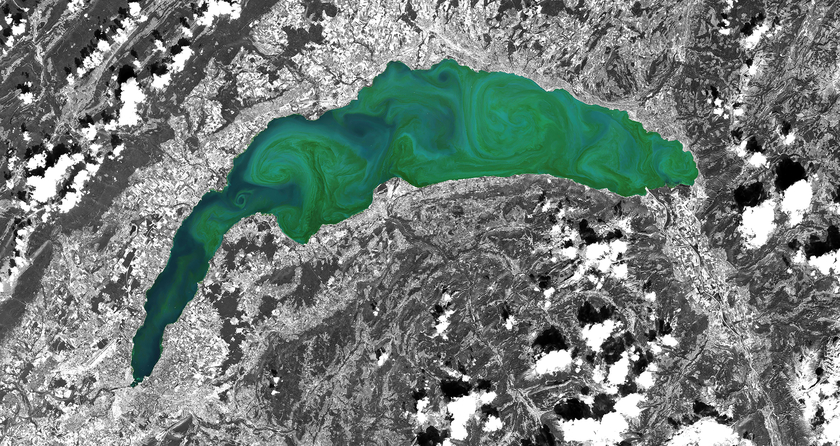Environmental monitoring from space
Article from the Info Day Magazine 2022
Since 2014, the European Copernicus Programme has been using satellites to collect data for environmental monitoring that is freely available for research. From this, Eawag obtains water quality indicators such as chlorophyll-a concentrations for the thirty largest Swiss lakes and develops approaches to integrate these indicators into conventional environmental monitoring. A prerequisite for this is the validation of the satellite surveys with in-situ measurements. At the LéXPLORE research stations on Lake Geneva, reference measurements are also carried out for comparisons with optical satellite data. Satellite images detect visible water components such as phytoplankton or dissolved organic substances (known as yellow matter). As a reference measurement, automatic sensors attached to a probe ascending and descending between the water surface and the lake floor collect variables such as spectral reflection, absorption and scattering during each satellite pass. These are compared directly with the satellite images. In addition, other parameters such as temperature or oxygen concentration can be used to interpret the optical data.
Created by Manuela di Giulio for the Info Day Magazine 2022

